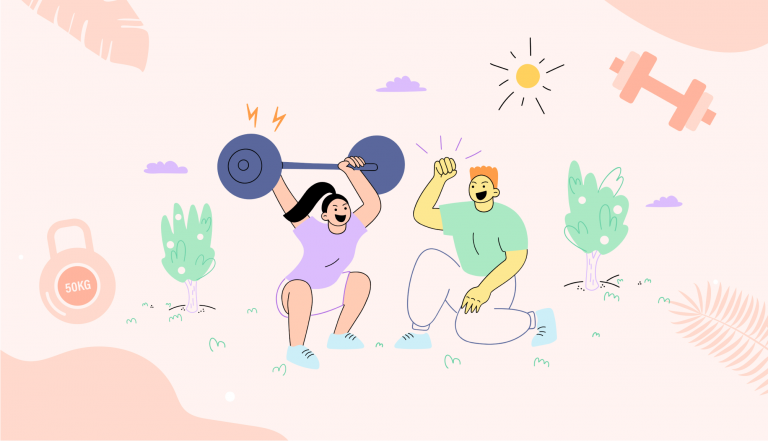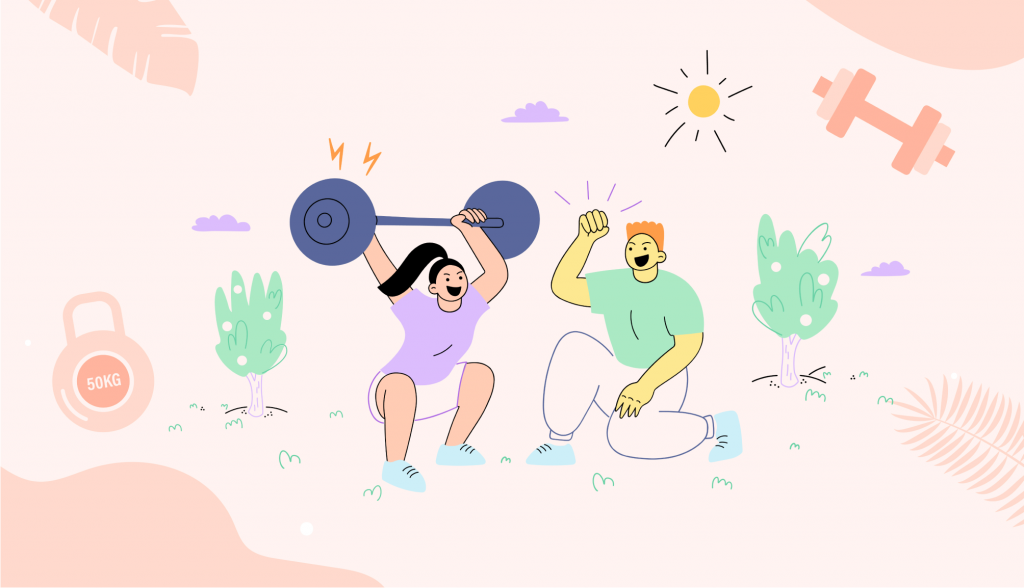The Green Gym
Ever feel like squeezing in a workout is just another stressful item on your never-ending to-do list? And let’s be honest, the sight of those endless rows of treadmills and the buzz of fluorescent lighting in your typical gym isn’t exactly uplifting. But what if the zest your fitness routine is missing is just a matter of changing your surroundings?
Picture this: swapping the hm of machines for the sounds of nature and trading harsh artificial lights for the soft glow of sunlight. Moving your exercise routine outdoors isn’t just about enjoying new views—it’s about transforming how you feel during and after your workout. This isn’t just about staying fit; it’s about rejuvenating your mind and body in the most natural way possible. Taking your fitness routine outside connects you back to the basics, tackling the physical and mental blocks that might have crept into your routine.
Embracing the outdoors for your workouts also taps into an often overlooked aspect of physical activity: the joy of exploration and adventure. When you run through a forest trail, hike up a hill, or stretch by a lakeside, each workout session becomes a discovery journey. This shift can drastically change your motivation levels. Instead of viewing exercise as a chore or a checkmark on your daily list, it becomes a cherished part of your day that you look forward to. Moreover, varying your routine with different outdoor locations can keep the experience fresh and exciting, combatting the boredom that often comes with repetitive gym routines. Thus, the outdoor gym not only enhances your physical and mental health but also reignites the intrinsic pleasure of movement and being active.
Rooted in Science of Outdoor Exercise
Exercising outdoors isn’t just invigorating; it’s grounded in solid science. When you take your workout routine into nature, your body responds quite differently than it does within the confines of an indoor gym. First and foremost, the varied terrain and natural obstacles you encounter outdoors provide a more holistic workout. This is because uneven surfaces and natural inclines engage different muscle groups, significantly enhancing your physical agility and endurance. Unlike the flat, predictable surfaces of a gym, outdoor environments require your body to adapt continually, which intensifies the workout and improves your balance and coordination over time.
On a neurochemical level, the benefits are just as compelling. Being outdoors in natural settings has been shown to increase the production of endorphins, the body’s own painkillers and mood elevators. This is why you often feel a ‘natural high’ after a vigorous outdoor activity. Additionally, outdoor exercise boosts serotonin production, a crucial neurotransmitter that stabilizes mood, and enhances feelings of well-being and happiness. This increase in endorphins and serotonin can effectively combat symptoms of stress, anxiety, and depression, making outdoor workouts a powerful ally in mental health management.
Furthermore, the exposure to natural light that comes with exercising outdoors plays a critical role in regulating our circadian rhythms. Natural light helps synchronize your body’s internal clock, which not only improves sleep patterns but also enhances overall mood and alertness during the day. Improved sleep has numerous benefits on its own, including better immune function, reduced inflammation, and a lower risk of many chronic diseases. Also, studies have consistently shown that spending time in green spaces can lead to a significant decrease in cortisol, a stress hormone. By lowering cortisol levels, regular outdoor exercise can help manage stress more effectively and promote a calmer, more balanced lifestyle.
Collectively, these factors offer a compelling argument for incorporating outdoor activities into your regular fitness regimen. Moving your workouts to natural environments can help break the cycle of a sedentary lifestyle, offering not just a change of scenery but a profoundly healthier way to live. Whether it’s running on a beach, cycling through a forest, or practicing yoga in a park, the benefits of outdoor exercise extend far beyond the physical, fostering a deep connection with nature that enriches both body and mind.
Subscribe to newsletter
Get your Gut Health Starter Guide right now.
Elevate your Tuesdays with practical, science-backed wisdom propelling you forward on your gut health journey.

How To Connect With Nature
- Map Your Terrain: Utilize apps like AllTrails or Google Maps to identify the best local parks, trails, or scenic paths. These tools can help you find routes that match your fitness level and preferred activities, whether it’s a tranquil spot for yoga or challenging trails for biking.
- Adapt Exercises to Outdoor Features: Use the natural and built environment to replace gym equipment. Park benches are great for tricep dips or step-ups; hills can be used for sprints or walking lunges; sandy areas are excellent for high-intensity interval training with added resistance. Get creative with what’s around you to keep your workouts challenging and engaging.
- Leverage Fitness Technology: Invest in a good quality fitness tracker to monitor your heart rate, track your steps, or even map your running route. Apps like Strava or Nike Run Club can enhance your training by tracking your progress, setting goals, and connecting you with other fitness enthusiasts. For structured workouts, apps like Fitbit Coach offer sessions tailored to outdoor settings.
- Join or Start a Fitness Group: Check platforms like Meetup or Facebook for existing outdoor fitness groups in your area. If you can’t find one, consider starting your own. This could be as simple as organizing a weekly run through a local park, a group cycling day, or outdoor yoga sessions. Group settings not only make workouts more enjoyable but also provide a support system to keep you motivated.
- Schedule Regular Sessions: Treat your outdoor workouts like any other important appointment. Setting a regular schedule helps build a routine and commitment. Try to be consistent with the time of day you exercise, as this can enhance the habit-forming process.
- Prepare for the Outdoors: Ensure you have the right gear for outdoor activities. This includes weather-appropriate clothing, a durable water bottle, sunscreen, and perhaps even a portable mat for yoga or stretching exercises. Proper preparation makes your outdoor workout experience more comfortable and enjoyable.
- Stay Safe and Informed: Always check the weather before heading out and familiarize yourself with the area you plan to explore. Apps like WeatherBug or The Weather Channel can provide real-time updates to avoid any unexpected conditions.
A Breath of Fresh Air
Alex, a dedicated fitness enthusiast, had always valued the structure and predictability of indoor gym workouts. However, as the months rolled on, the confines of the gym began to feel more like a prison than a sanctuary. Seeking a change, Alex took a friend’s advice to try jogging at a nearby nature reserve. The transformation was immediate and profound. The trails offered not only diverse terrains that challenged his body in new ways but also spectacular views that captivated his senses. Each run became an adventure, each yoga session by the lake a meditative experience, renewing his love for exercise and expanding his fitness horizons.
“I’ve always been a gym rat, sticking to my routine day in and day out. But something changed when I started working out outdoors. Suddenly, fitness wasn’t just about repetition and targets; it was about experience and exploration,” Alex explains enthusiastically. “The moment I hit the trail, I felt a freedom I hadn’t realized I was missing. The natural light, the changing scenery, the fresh air—it all combined to create a workout that was as uplifting mentally as it was physically. I discovered muscles I didn’t know I had, and I started looking forward to each new challenge on the path. It’s not just a workout anymore; it’s a vital part of my well-being.”


















